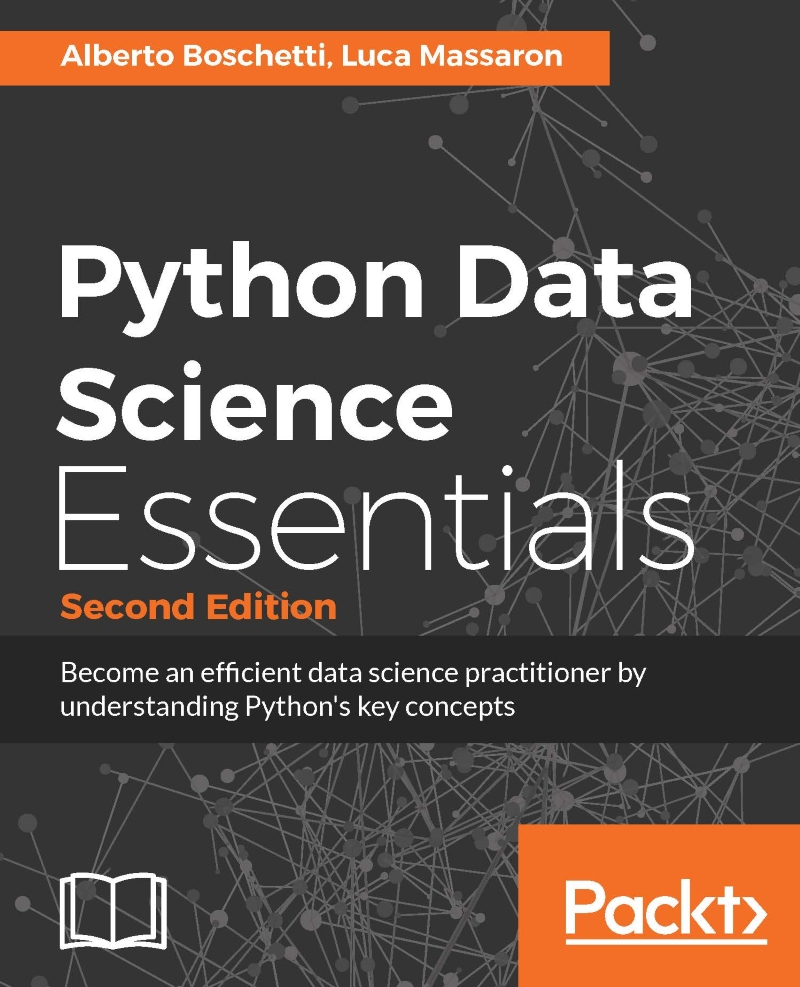-
Book Overview & Buying

-
Table Of Contents

Python Data Science Essentials - Second Edition
By :

Python Data Science Essentials
By:
Overview of this book
Fully expanded and upgraded, the second edition of Python Data Science Essentials takes you through all you need to know to suceed in data science using Python. Get modern insight into the core of Python data, including the latest versions of Jupyter notebooks, NumPy, pandas and scikit-learn. Look beyond the fundamentals with beautiful data visualizations with Seaborn and ggplot, web development with Bottle, and even the new frontiers of deep learning with Theano and TensorFlow.
Dive into building your essential Python 3.5 data science toolbox, using a single-source approach that will allow to to work with Python 2.7 as well. Get to grips fast with data munging and preprocessing, and all the techniques you need to load, analyse, and process your data. Finally, get a complete overview of principal machine learning algorithms, graph analysis techniques, and all the visualization and deployment instruments that make it easier to present your results to an audience of both data science experts and business users.
Table of Contents (8 chapters)
Preface
 Free Chapter
Free Chapter
1. First Steps
2. Data Munging
3. The Data Pipeline
4. Machine Learning
5. Social Network Analysis
6. Visualization, Insights, and Results
1. Strengthen Your Python Foundations
